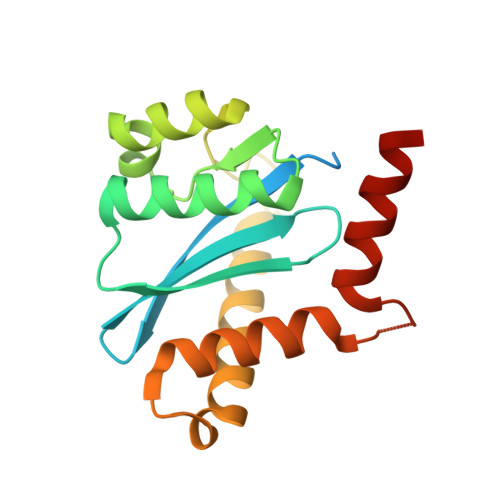Structural basis for a new mechanism of inhibition of HIV-1 integrase identified by fragment screening and structure-based design
Rhodes, D.I., Peat, T.S., Vandegraaff, N., Jeevarajah, D., Le, G., Jones, E.D., Smith, J.A., Coates, J.A., Winfield, L.J., Thienthong, N., Newman, J., Lucent, D., Ryan, J.H., Savage, G.P., Francis, C.L., Deadman, J.J.(2011) Antivir Chem Chemother 21: 155-168
- PubMed: 21602613
- DOI: https://doi.org/10.3851/IMP1716
- Primary Citation of Related Structures:
3NF6, 3NF7, 3NF8, 3NF9, 3NFA - PubMed Abstract:
HIV-1 integrase is a clinically validated therapeutic target for the treatment of HIV-1 infection, with one approved therapeutic currently on the market. This enzyme represents an attractive target for the development of new inhibitors to HIV-1 that are effective against the current resistance mutations. A fragment-based screening method employing surface plasmon resonance and NMR was initially used to detect interactions between integrase and fragments. The binding sites of the fragments were elucidated by crystallography and the structural information used to design and synthesize improved ligands. The location of binding of fragments to the catalytic core of integrase was found to be in a previously undescribed binding site, adjacent to the mobile loop. Enzyme assays confirmed that formation of enzyme-fragment complexes inhibits the catalytic activity of integrase and the structural data was utilized to further develop these fragments into more potent novel enzyme inhibitors. We have defined a new site in integrase as a valid region for the structure-based design of allosteric integrase inhibitors. Using a structure-based design process we have improved the activity of the initial fragments 45-fold.
Organizational Affiliation:
Avexa Ltd, Richmond, Australia. [email protected]


















